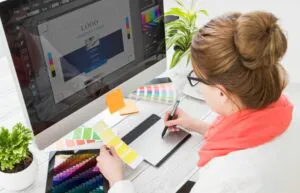Procurement, the process of obtaining goods and services, is a crucial function in both the public and private sectors. However, the approaches, priorities, and regulations governing procurement in these two sectors can differ significantly. Understanding these differences is essential for businesses, policymakers, and stakeholders who interact with or work within these sectors. This article explores the key differences between public and private sector procurement, highlighting their unique characteristics and impacts.
Introduction to Public and Private Sector Procurement
Public sector procurement refers to the process by which government agencies and publicly funded organisations acquire goods, services, and works. This process is highly regulated to ensure transparency, accountability, and fairness. Public procurement aims to achieve value for money while adhering to strict ethical standards and public policies.
In contrast, private sector procurement is conducted by businesses and private organisations. The primary goal is to optimise the cost, quality, and efficiency of goods and services to enhance profitability and competitive advantage. Private sector procurement is less regulated than public procurement, allowing for greater flexibility and innovation.
Differences Between Public and Private Sector Procurement
- Contract Awarding Process: In the public sector the contracts are awarded through a competitive bidding process. This ensures the selection of the best supplier and provides the best value for money. Private sector contracts are typically awarded through a negotiation process, offering more flexibility to negotiate favourable terms and conditions.
- Procurement Technology: Public sector companies heavily use technology to manage procurement processes, including e-procurement systems. This streamlines the process, reduces costs, and improves transparency. On the other hand, in private organizations technology is not as widely adopted as in the public sector. However, some organizations are starting to use technology for procurement management.
- Regulatory Framework and Compliance: Public sector procurement is heavily regulated. Governments impose stringent rules and procedures to ensure accountability, prevent corruption, and promote fair competition. These regulations often include detailed documentation, bidding processes, and compliance with local, national, and international laws. While private sector procurement also adheres to laws and regulations, the level of oversight is typically less stringent than in the public sector. Private companies have more leeway to streamline processes and make quick decisions, although they must still adhere to ethical standards and corporate governance principles.
- Cost Management: Cost management in public and private sector companies differs significantly due to their distinct operational frameworks and financial regulations. In the public sector, organizations must adhere to strict budget limits imposed by government policies and public accountability requirements. This often results in stringent controls on procurement spending, necessitating detailed justifications for expenditures and ensuring compliance with pre-set budgetary constraints. In contrast, the private sector enjoys greater flexibility in cost management. Organizations can allocate funds more freely to meet business objectives, allowing them to invest strategically in quality, innovation, and long-term value rather than being confined by rigid budget caps.
Social Impact of Public and Private Sector Procurement
Public sector procurement has a significant social impact as it directly affects public services and infrastructure. By prioritizing social objectives such as environmental sustainability, local economic development, and social inclusion, public procurement can drive positive societal change. While private sector procurement primarily focuses on business goals, it also has the potential to create social impact. Companies can adopt sustainable procurement practices, such as sourcing from environmentally responsible suppliers or supporting fair trade initiatives. Additionally, corporate social responsibility (CSR) programs often include procurement policies that benefit local communities and promote ethical standards in the supply chain.
Conclusion
Understanding the key differences between public and private sector procurement is crucial for navigating and engaging with these sectors effectively. While both sectors aim to acquire necessary goods and services, their approaches, priorities, and regulatory environments differ significantly. Recognizing these differences helps in appreciating the unique challenges and opportunities within each sector, ultimately leading to better procurement and sourcing practices and outcomes that benefit both businesses and society.

To know more




